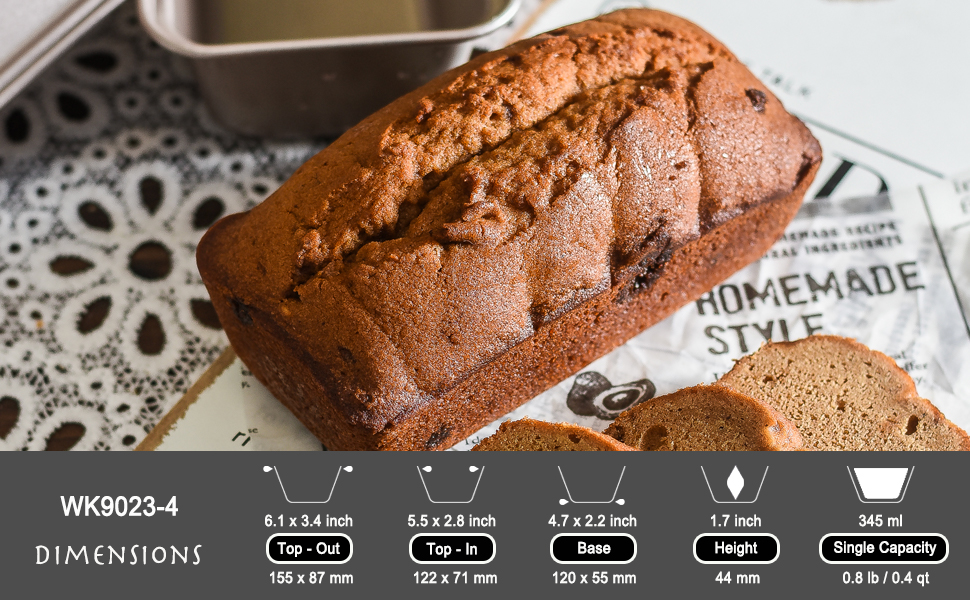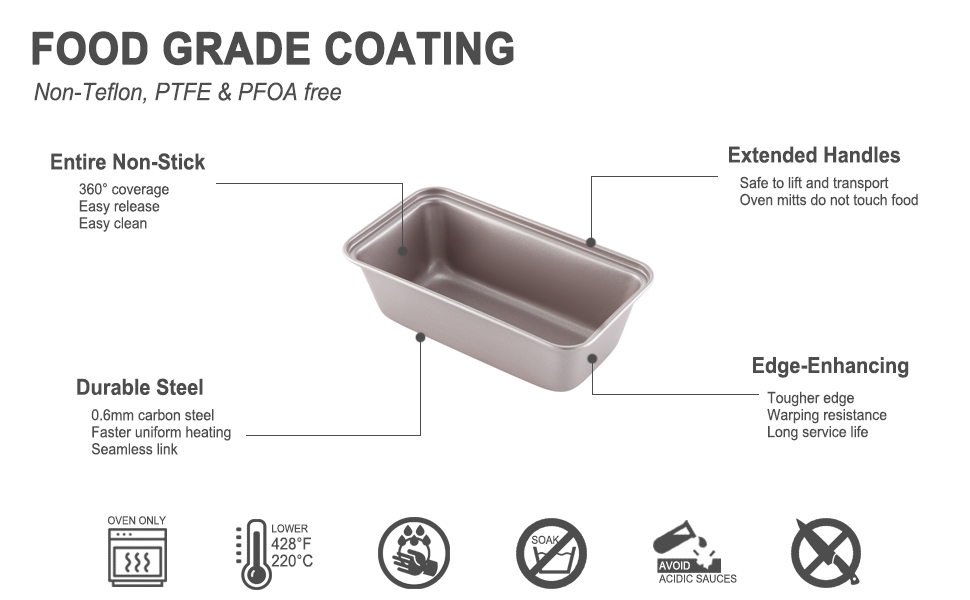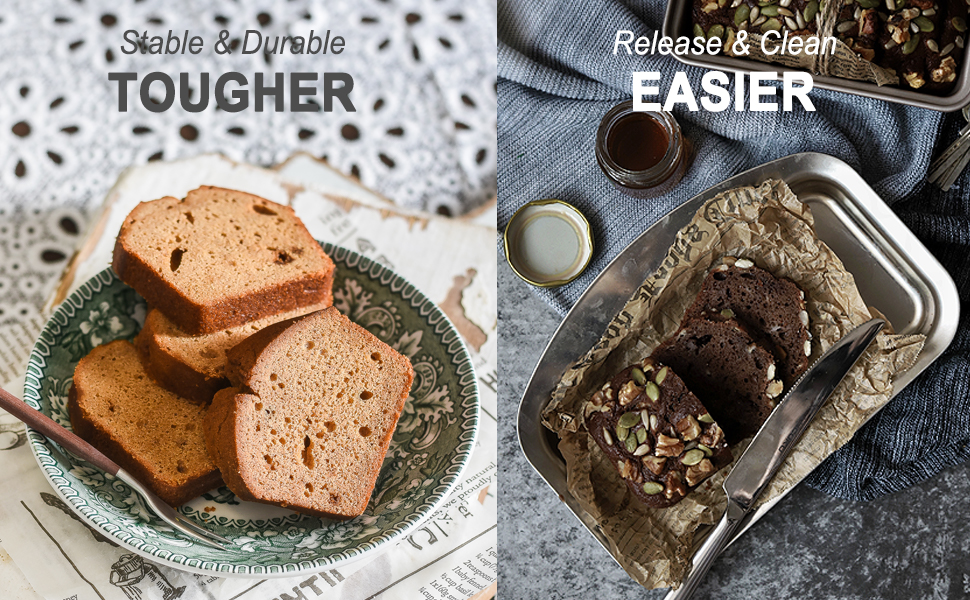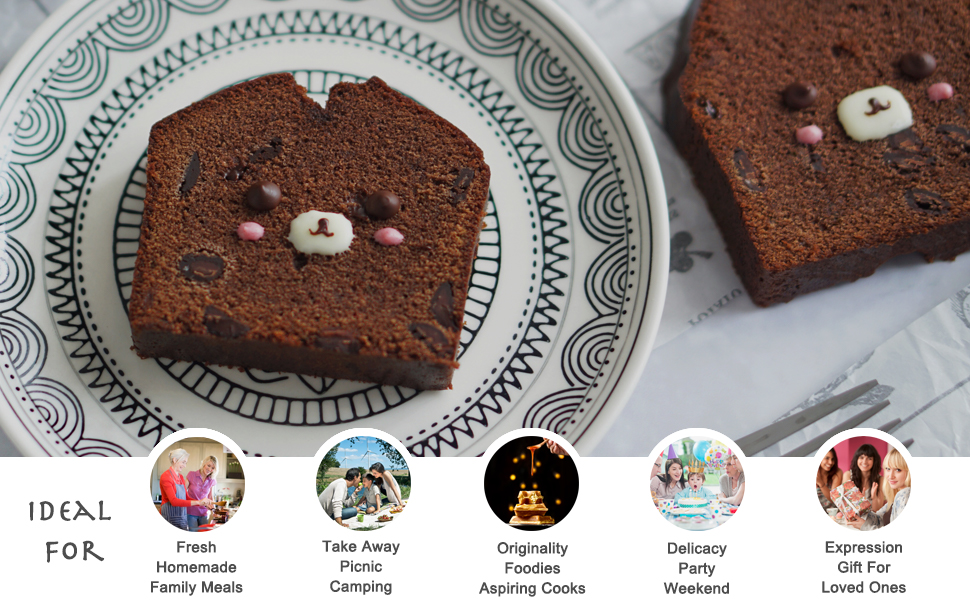Email format error
Email cannot be empty
Email already exists
6-20 characters(letters plus numbers only)
The password is inconsistent
Email format error
Email cannot be empty
Email does not exist
6-20 characters(letters plus numbers only)
The password is inconsistent

This 3.4 inch x 5.5 inch loaf pan's heavy-duty construction resists warping and heats evenly to brown beautifully and helps reduce hot spots. Made from durable carbon steel, which ensures a longer lifespan for the pan, so you won't have to replace it as often.




About this item
Product dimensions: 6.1 x 3.4 x 1.9 inch / 155 x 87 x 48 mm
0.8 mm premium quality carbon steel material for even heating and exceptional durability
Non-stick coating for quick release and easy cleanup
Oven-safe to below 428 degrees F; wear oven mitts when handling hot pan
Hand washing recommended
Product description:
BUILT TO LAST LOAF PAN: This 3.4 inch x 5.5 inch loaf pan’s heavy-duty construction resists warping and heats evenly to brown beautifully and helps reduce hot spots.
HIGH-QUALITY NONSTICK: The bread baking pan features nonstick inside and out to deliver great food release with quick cleanup.
VERSATILE BAKEWARE: Nonstick loaf pan is oven safe to 428 degrees Fahrenheit for a wide variety of bread baking and savory recipes.
CHEFMADE QUALITY: The nonstick baking pan and every other piece of CHEFMADE Bakeware dependably uphold a distinguished tradition of reliability, value, and performance.
What Is a Standard Loaf Pan?
In America, what recipes call a “standard loaf pan” is 8-1/2 x 4-1/2 x 2-1/2 inches. If a store sells only one side of the loaf pan, this is probably it. If you own one loaf pan, it should probably be this size.
Larger loaf pans are not uncommon, either in stores or for recipes. Another common size is a loaf pan measuring 9 x 5 x 2-1/2 inches.
The difference between an 8 1/2-inch pan and a 9-inch pan doesn't seem that big, right? But it is.
If you do the math, you’ll find there’s a 15 percent difference in capacity. Here's what that difference means:
If a recipe’s yield under-fills a pan, it’s not too big a deal. It’ll probably bake faster and not rise as high, but the recipe will work.
If the recipe’s yield over-fills the pan, the batter can spill over and burn, or a risen dough can have droopy, unattractive mushroom-cloud blobs.
As a rule of thumb, if the batter fills the pan 2/3 full, the loaf pan is at its limit. If you still have extra batter, don’t over-fill the pan. Instead, bake the excess batter in a muffin pan, filling the empty tins with a few tablespoons of water to keep the pan from warping. Disaster averted!